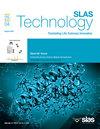Identifcation of the FGF family as therapeutic targets and prognostic biomarkers in the microenvironment of head and neck squamous cell carcinoma
IF 3.7
4区 医学
Q3 BIOCHEMICAL RESEARCH METHODS
引用次数: 0
Abstract
Background
Almost 90 % of head and neck malignancies are malignant squamous cell cancers, making it the sixth most common malignancy in the developing countries, with an overall five-year overall survival rate about 40 %-50 %. Early diagnosis and treatment can bring a better prognosis. Fibroblast growth factor (FGF) is an important polypeptide in vivo. Studies have found that FGF signal has carcinogenic potential and participates in a variety of carcinogenic behaviors. Some experiments have proved that FGF signal has the function of tumor inhibition in some cases, and the role of FGF signalling in tissue repair and homeostasis suggest a role for FGF in targeted therapy and prognosis. However, its manifestation and predictive role in HNSC have not been clearly defined.
Methods
Genome-wide expression analysis of Oncomine evaluated the evaluation of FGF family expression in HNSC. Expression analysis and HNSC data set were used to obtain FGF family expression data and T statistic was applied for analysis. The differential mRNA expression levels in tumor versus normal tissues, as well as the correlation with pathological staging and prognosis, were examined using the GEPIA single-gene analysis tool for the FGF family.FGF family altered CO expression and network modules were obtained from cBioportal and analyzed in 520 HNSC samples.Pro-protein interaction (PPI) flow network is performed on the differentially ordered FGF clusters using STRING, Gene Operating System (GO) domain domain enrichment as well as Kyoto Encyclopedia of Genes and Genomes (KEGG) pathway enrichment analysis are performed on the FGF cluster and its neighbouring genes using DAVID6.8, key transcriptional factors (TF) of FGF family was analyzed by TRRUST, correlation between FGF family level and autoimmune cell migration was evaluated by TIMER, and biological analysis of FGF family kinase target enrichment was performed using LinkInterpreter.
Results
Only the expression of FGF6 in HNSC was down-regulated in all FGF family(FC=2),Transcriptional level of FGF1, FGF2, FGF5, FGF7–14, FGF17–19, FGF21 and FGF22 was upregulated in HNSC .In terms of the relative level of FGF family in HNSC, the greatest amount of FGF11. In different pathological stages of HNSC, the expression of FGF was meaningless (P>0.05), and FGF3–6, FGF8–10, FGF14, FGF16, FGF17, FGF1921, FGF23 showed no significant difference in different HNSC stages. Low expression of FGF5 and high expression of FGF22 had low overall survival(OS) rate of HNSC(P =0.012, P =0.0015). In addition, enrichment analysis of FGF family in HNSC showed that it was highly abundant in PI3K-Akt signaling pathway, MAPK and rasper pathway. Our data showed that ATF4, STAT, RELA, NFKB1 are key transcription target of the FGF family, NLK, LOCK1, LYN, ZAP70, MAP2K3, RPS6KA4, AURKB, ATR, ROCK1, MYLK2, CAMK2A, EGFR, MAPK3, MAP3K8, SYK, LCK, HCK, PKN2, RPS6KA1, BUB1, CDK5, ITK, FYN, TBK1, ATM, CDK2, PTK2 are kinase targets of the FGF family. We identified a relationship between the modulation of FGF expression and cellular infiltration, such as B lymphocytes, CD4+ T cells and macrophages dendritic cells.
Conclusions
Our data may shed new light on the choice of immunotherapeutic targets and predictive biomarkers in HNSC.
头颈部鳞状细胞癌微环境中FGF家族作为治疗靶点和预后生物标志物的鉴定
背景:几乎90%的头颈部恶性肿瘤为恶性鳞状细胞癌,使其成为发展中国家第六大最常见的恶性肿瘤,总体5年总体生存率约为40%-50%。早期诊断和治疗可带来较好的预后。成纤维细胞生长因子(Fibroblast growth factor, FGF)是体内重要的多肽。研究发现FGF信号具有致癌潜能,参与多种致癌行为。一些实验证明FGF信号在某些情况下具有肿瘤抑制功能,FGF信号在组织修复和稳态中的作用提示了FGF在靶向治疗和预后中的作用。然而,其在HNSC中的表现和预测作用尚未明确。方法:通过Oncomine全基因组表达分析评价HNSC中FGF家族的表达。采用表达分析和HNSC数据集获得FGF家族表达数据,采用T统计进行分析。使用FGF家族的GEPIA单基因分析工具检测肿瘤与正常组织中mRNA表达水平的差异,以及与病理分期和预后的相关性。FGF家族改变的CO表达和网络模块从cBioportal获得,并在520个HNSC样本中进行了分析。使用STRING对差异排序的FGF簇进行前蛋白相互作用(PPI)流网络分析,使用DAVID6.8对FGF簇及其邻近基因进行基因操作系统(GO)结构域富集和京都基因与基因组百科全书(KEGG)通路富集分析,使用trust分析FGF家族关键转录因子(TF),使用TIMER评估FGF家族水平与自身免疫细胞迁移的相关性。并使用LinkInterpreter进行FGF家族激酶靶点富集的生物学分析。结果:在所有FGF家族中,只有FGF6在HNSC中表达下调(FC=2), FGF1、FGF2、FGF5、FGF7-14、FGF17-19、FGF21和FGF22在HNSC中表达上调,其中FGF家族在HNSC中的相对表达量以FGF11最多。在HNSC不同病理分期中,FGF的表达无统计学意义(P < 0.05), FGF3-6、FGF8-10、FGF14、FGF16、FGF17、FGF19 -21、FGF23在HNSC不同分期中差异无统计学意义。低表达FGF5和高表达FGF22的HNSC总生存率较低(P =0.012, P =0.0015)。此外,对HNSC中FGF家族的富集分析表明,它在PI3K-Akt信号通路、MAPK和rasper信号通路中高度富集。我们的数据显示ATF4、STAT、RELA、NFKB1是FGF家族的关键转录靶点,NLK、LOCK1、LYN、ZAP70、MAP2K3、RPS6KA4、AURKB、ATR、ROCK1、MYLK2、CAMK2A、EGFR、MAPK3、MAP3K8、SYK、LCK、HCK、PKN2、RPS6KA1、BUB1、CDK5、ITK、FYN、TBK1、ATM、CDK2、PTK2是FGF家族的激酶靶点。我们确定了FGF表达调节与细胞浸润(如B淋巴细胞、CD4+ T细胞和巨噬细胞树突状细胞)之间的关系。结论:我们的数据可能为HNSC的免疫治疗靶点和预测性生物标志物的选择提供新的思路。
本文章由计算机程序翻译,如有差异,请以英文原文为准。
求助全文
约1分钟内获得全文
求助全文
来源期刊

SLAS Technology
Computer Science-Computer Science Applications
CiteScore
6.30
自引率
7.40%
发文量
47
审稿时长
106 days
期刊介绍:
SLAS Technology emphasizes scientific and technical advances that enable and improve life sciences research and development; drug-delivery; diagnostics; biomedical and molecular imaging; and personalized and precision medicine. This includes high-throughput and other laboratory automation technologies; micro/nanotechnologies; analytical, separation and quantitative techniques; synthetic chemistry and biology; informatics (data analysis, statistics, bio, genomic and chemoinformatics); and more.
 求助内容:
求助内容: 应助结果提醒方式:
应助结果提醒方式:


